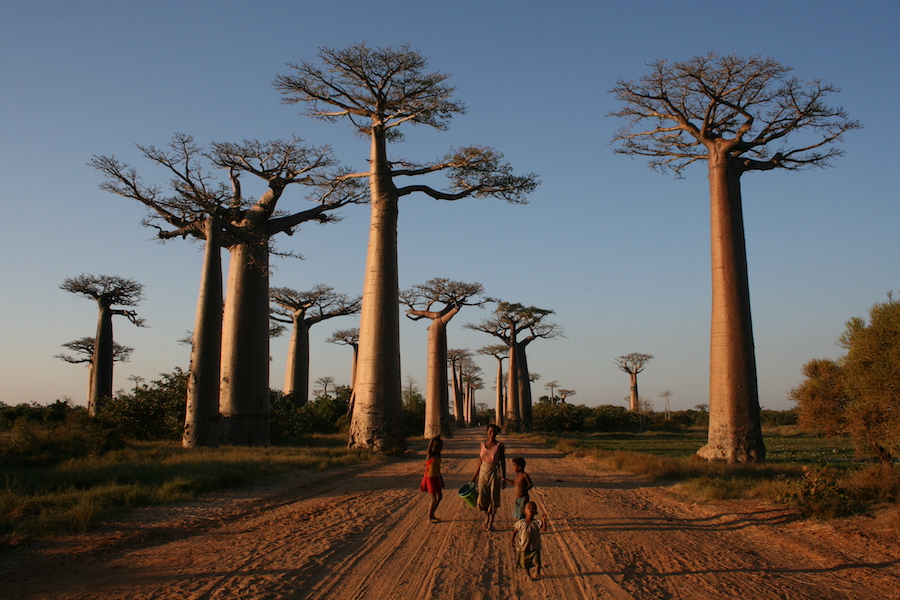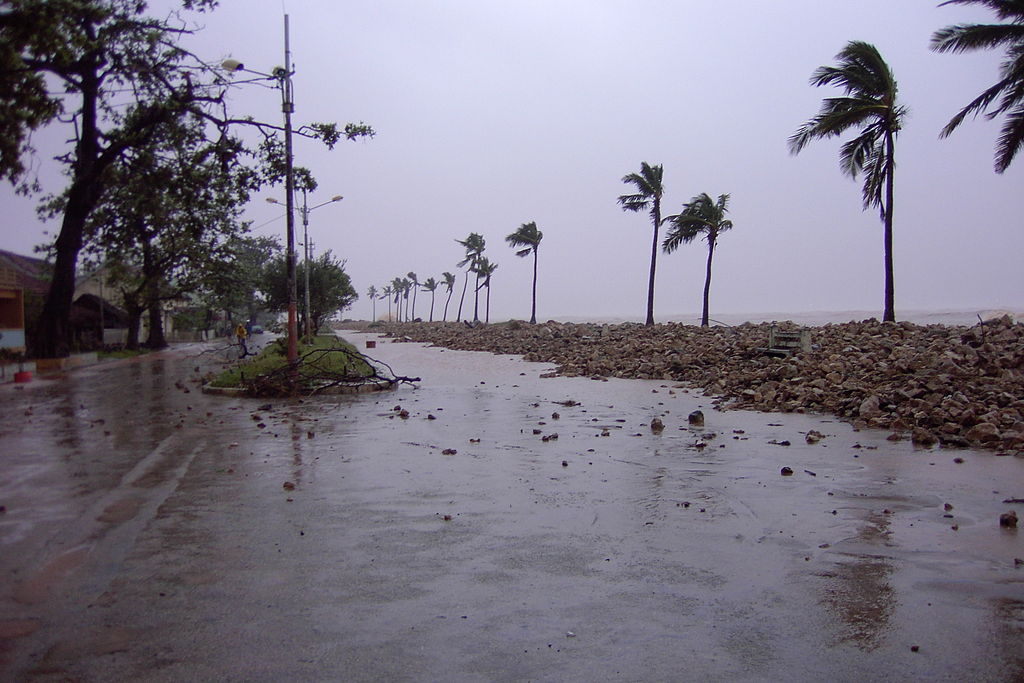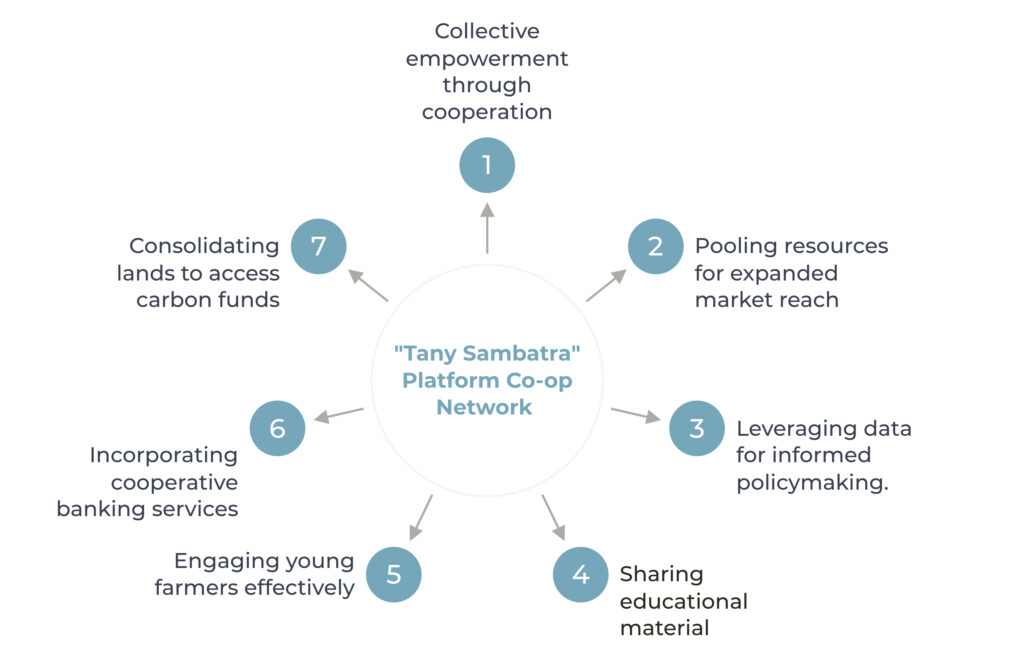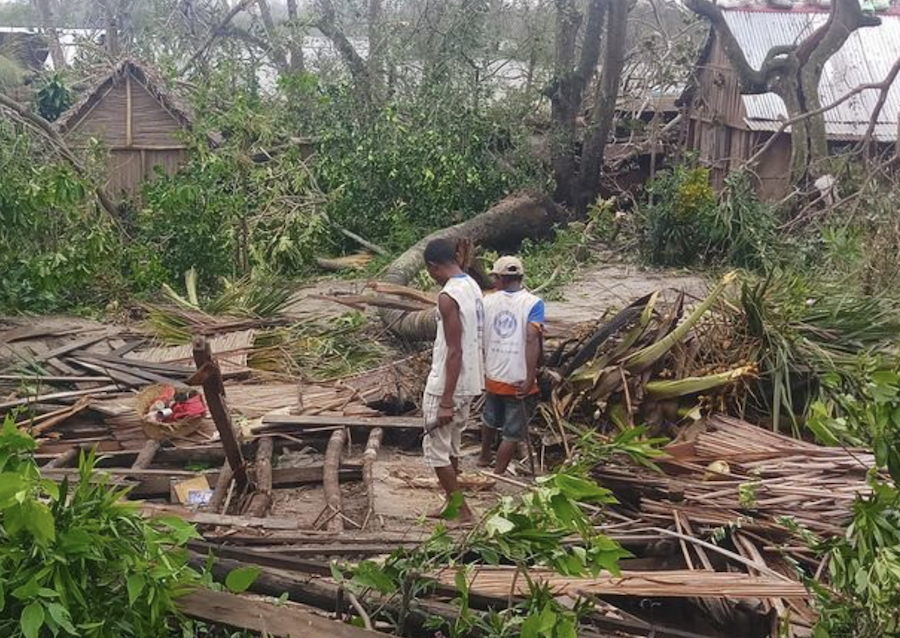The Ubuntu Path of Abundance: A Platform Co-op Network Guiding the Journey of Regenerative Agriculture in Madagascar

Madagascar, an island located in the Indian Ocean off the southeastern coast of Africa, is known worldwide for its exceptional biodiversity, but it is also one of the least developed countries on this planet. For years, the Malagasy population, numbering around 25 million, has held a hopeful aspiration for Madagascar—a transformative journey that balances the preservation of its unparalleled biodiversity exemplified by its Baobab trees which is the biggest in the world, it’s chameleons where one of them was the smallest known chameleon and among the smallest reptiles, tomato frogs, it’s lemurs and thousands more endemic species with the pursuit of sustainable development. This transition requires robust efforts in conserving the country’s ecological treasures while fostering economic growth, and social progress and has to be human-centered.

According to the World Bank, Madagascar has approximately 5.6 million hectares of land suitable for farming and cultivation. However, only 64% of this available land is currently being utilized for agricultural purposes. This means that there is still a significant portion of land with the potential for agricultural production that remains untapped. Despite this potential, Madagascar’s agriculture faces a multitude of challenges, including the relentless impact of cyclones. These destructive forces unleash powerful winds and heavy rains more often and dreadfully every year. It devastates crops, damages infrastructure, and displaces farmers. The aftermath is marked by crop and livestock losses, soil erosion, disrupted supply chains, and food insecurity. As a result, a large majority of the population, around 92%, lives below the poverty line, making Madagascar one of the poorest nations in the world.
The proposed platform for Madagascar aims to promote biodiversity conservation and regenerative agriculture practices. It seeks to combat adversities and bridge the digital divide through the use of technology. The platform also focuses on supporting the agriculture sector, particularly in coopreneurship, and providing financial assistance to farmers. Additionally, it emphasizes investment in research and development, facilitates collaboration among stakeholders involved in rural development, and manages private and public arable lands using data to enhance biodiversity conservation.
By implementing this initiative, the island nation of Madagascar can develop a robust agricultural sector capable of driving the country’s economic growth and ensuring food security for its population to be more resilient to climate change. The project will create employment opportunities, provide healthy foods, restore dignity to farming communities, and contribute to the attainment of 13 of the 17 United Nations Sustainable Development Goals by 2030.
This proposed solution is grounded in the study and analysis of several real-world national strategies implemented in Madagascar to promote sustainable development, indicating that it is not a utopian concept. This national platform coop aims to build upon existing initiatives and integrate them into a cohesive approach that addresses the various aspects of sustainable development in Madagascar. A National Cooperative Development Strategy has already existed since 2018 with the support of the U.S. Agency for International Development (USAID)’s Cooperative Development Program (CDP), NCBA CLUSA and all the national stakeholders to promote economic empowerment via the co-op movement, sustainable development, local ownership and growth of cooperative enterprises in the country. A National Strategy for the Development of Rural Entrepreneurship is also there to foster economic growth, job creation, and sustainable development in rural areas by promoting and supporting entrepreneurship activities, providing necessary resources and support systems, facilitating access to markets and finance, encouraging innovation and capacity-building, and addressing the specific challenges and needs of rural entrepreneurs. Redd+ Madagascar office was created to mitigate climate change and promote sustainable forest management by reducing emissions from deforestation and forest degradation, conserving biodiversity, enhancing community livelihoods, and promoting sustainable land-use practices through a results-based payment mechanism.

The Proposed “Tany Sambatra” Platform Co-op Network

Unfortunately, the majority of Malagasy farmers are engaged in small-scale subsistence farming with individual plots ranging from approximately 1 to 5 acres. They face difficulties in accessing carbon funds, which are financial mechanisms established through international agreements or initiatives addressing climate change, are designed to support projects that reduce greenhouse gas emissions and promote carbon sequestration.
The role of Tany Sambatra, a national (or regional) platform cooperative is to encourage farmers and all small landowners to:
- come together as a collective, democratically, and go to market collectively (collectively negotiate better prices for their products);
- collect data about their farming operations;
- leverage the collected data about their harvest but also health et cetera with policy makers;
- pooling their resources to establish better distribution channels, reach larger customer bases, including domestic and international markets;
- sharing educational material;
- attracting young farmers;
- adding a financial institution such as a co-op bank to their network;
- and consolidating their lands without loosing autonomy while meet the minimum land size requirement for carbon funds, allowing them to break free from dependence on public or private financing while promoting climate justice and restoring their dignity.
Through this Platform Cooperative “Tany Sambatra,” farmers can utilize green climate funds for various purposes aimed at promoting sustainable agricultural practices and mitigating the impacts of climate change. We aim to invest in improved farming techniques, specifically regenerative agriculture, and implement more efficient irrigation systems. The funds can also be used to purchase environmentally friendly equipment and technologies, such as energy-efficient machinery or renewable energy sources for farm operations. Additionally, farmers can allocate funds to support research and development initiatives focused on sustainable farming methods and invest in capacity building and cooperative training programs for themselves and their communities. Overall, the green climate funds empower farmers to implement measures that enhance resilience, reduce greenhouse gas emissions, conserve natural resources, and promote long-term sustainability in agricultural systems.
Regenerative agriculture is an innovative and holistic farming technique that focuses on revitalizing and improving soil health, biodiversity, carbon sequestration, and community well-being. It encompasses a range of practices that go beyond conventional agriculture, aiming to restore and regenerate ecosystems. By adopting regenerative agriculture, farmers employ methods such as cover cropping, crop rotation, and agroforestry, which promote soil fertility, reduce erosion, and enhance water retention. These practices foster the growth of beneficial microorganisms, facilitate natural nutrient cycling, and restore soil structure. Moreover, regenerative agriculture promotes biodiversity by creating habitats for pollinators, beneficial insects, and wildlife, thus enhancing the overall ecological balance. Another crucial aspect is carbon sequestration, as regenerative practices increase the amount of carbon stored in the soil, mitigating the effects of climate change.
By prioritizing regenerative agriculture, we can establish resilient and sustainable food systems that protect natural resources, enhance farm productivity, and contribute to a healthier planet for future generations.

Challenges
Regenerative agriculture faces several challenges in Madagascar, which impact its widespread adoption and implementation. Firstly, limited access to resources and funding poses a significant hurdle but that could be resolved by the Green Climate Fund for example or other funds that address the climate crisis. Many farmers lack the necessary financial support to transition to regenerative practices, as it often requires upfront investments in infrastructure, training, and new techniques. Additionally, access to quality seeds, organic inputs, and technical guidance may be limited, impeding the adoption of regenerative methods. Furthermore, inadequate infrastructure, such as irrigation systems and storage facilities, can hinder the scalability of regenerative practices.
As I discussed earlier, Madagascar faces significant climate challenges that directly impact farmers and agricultural practices in the country. One of the primary challenges is the increasing frequency and intensity of extreme weather events, including cyclones, droughts, and floods. These events can result in crop losses, soil erosion, and infrastructure damage, leading to decreased agricultural productivity and economic instability for farmers. Additionally, rising temperatures and changing rainfall patterns disrupt traditional farming calendars and exacerbate water scarcity issues, further compromising agricultural activities. The country’s vulnerability to climate change is also exacerbated by deforestation, which reduces natural buffers against climate impacts, such as forest cover for regulating water cycles and mitigating soil erosion. Furthermore, the effects of climate change contribute to the spread of pests and diseases, posing additional risks to crops and livestock. These challenges make it difficult for farmers to predict and adapt to changing conditions, leading to food insecurity, decreased incomes, and increased vulnerability among farming communities. Addressing these climate challenges requires the adoption of resilient organizations like a platform co-op and adaptive agricultural practices, such as regenerative agriculture, improved water management techniques, crop diversification, and the integration of climate-smart technologies. Additionally, strengthening early warning systems, providing access to climate information and financial resources, and promoting capacity building and knowledge sharing among farmers are essential for enhancing resilience and mitigating the impacts of climate change on agriculture in Madagascar.
Moreover, lack of awareness and knowledge about regenerative practices among farmers and communities poses a challenge. Effective training and awareness campaigns are needed to educate and empower farmers to embrace regenerative techniques, avoid monoculture, avoid slash-and-burn farming to feed zebus or for temporary one- or two-year plantings, which is another real conservation scourge in Madagascar for the reason of poverty and lack of education. Lastly, policy and institutional support are crucial for creating an enabling environment for regenerative agriculture, including incentives, subsidies, and favorable regulations. Overcoming these challenges will require collaborative efforts from stakeholders, including government agencies, cooperatives, NGOs, research institutions, and farmers’ associations, to promote and support the adoption of large scale regenerative agriculture practices in Madagascar.
Integrating regenerative agriculture with cooperative platforms in Madagascar can be a promising approach to foster sustainable farming practices and empower farmers.
Integrating Ubuntu and “Fihavanana Malagasy” in a Platform Co-op Network for Generative Agriculture
In practical terms, within the next two years, we will undertake a pilot project and develop a proof of concept in a 500-hectare area located in Eastern Madagascar, which we are currently in the process of securing. Through a platform co-op network in the making, farmers can collectively learn regenerative agriculture practices, enhance productivity, and efficiency. We will develop a platform co-op for farmers to collaborate and take a production and/or marketing role, get closer to help farmers sell their products, and help them implement regenerative techniques effectively. This cooperative structure strengthens its market position, allowing for better prices and access to larger markets. The main goal is to help farmers pool land resources, meet the required size for Green Climate funding, and support each other.
We believe that a strong cooperative network connected through an innovative platform holds potential for rapid development in Madagascar, benefiting the predominantly rural population. We know that regenerative agriculture can increase Soil Organic Carbon (SOC) by 0.25% to 0.5% annually, sequestering 25 to 50 tons of CO2 per hectare. Carbon offset credits from this increase can be sold on international markets, potentially earning up to €1 to 2 million per year for a 500 hectare farm. That fund can therefore open the possibility for the creation of a cooperative Bank or a micro-credit institution. We can also work with existing one as we put our lands on the table if a guarantee is needed (it is the case sometimes)
Our platform cooperative initiative aims to address these challenges, supporting farmers throughout the transition process to this sustainable agriculture and opening new possibilities for the development of Madagascar. By providing resources, knowledge sharing, and financial assistance, we enable a successful shift to an agriculture practice that benefits people and the environment.
Madagascar has seen the emergence of cooperative movements in various sectors since colonial times. The Madagascar vanilla industry is indeed one of the major producers of vanilla beans worldwide. In the vanilla sector, cooperatives have played a crucial role in empowering small-scale farmers and ensuring fair trade practices. These cooperatives provide valuable support in terms of technical assistance, training, and quality control, enabling farmers to enhance their vanilla production and generate sustainable incomes in different regions on the Island. Cooperatives have become increasingly prominent in the southern region of Madagascar, specifically in sectors such as rice cultivation, livestock farming, arts, and crafts. These cooperatives foster solidarity among farmers, enabling them to pool resources, share knowledge, and collectively address challenges such as water scarcity and soil degradation. By working together through cooperatives, farmers in Madagascar can overcome obstacles. Between the adoption of the Madagascar cooperative law in 1999 and the year 2016, approximately 1,714 structures were registered in Madagascar, bringing together nearly 37,134 members during the same period, mainly in the field of agriculture. The cooperative spirit in Madagascar is deeply ingrained in the cultural concept of “Fihavanana Malagasy,” which reflects kinship, friendship, and goodwill among individuals, both in the physical and spiritual realms. It shares similarities with the Southern African concept of ubuntu, highlighting the significance of community, interdependence, and cooperation in both societies.
The cooperative movement in Madagascar, can serve as a powerful collective action and cooperation to drive positive change, promote sustainable agriculture, and contribute to the socio-economic development of the country and we need you to join forces.